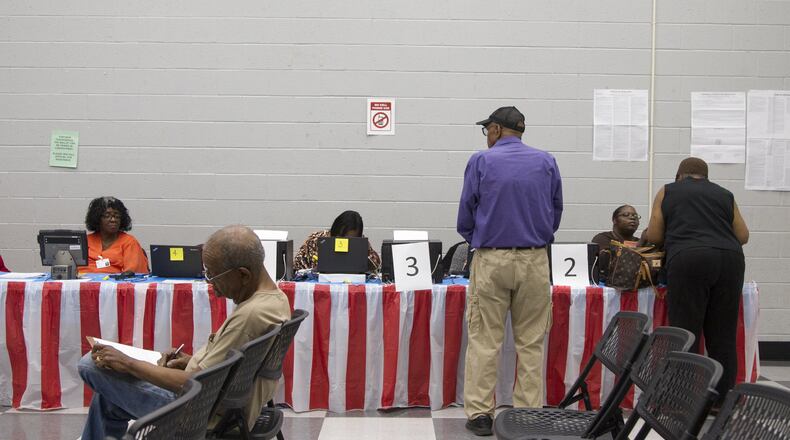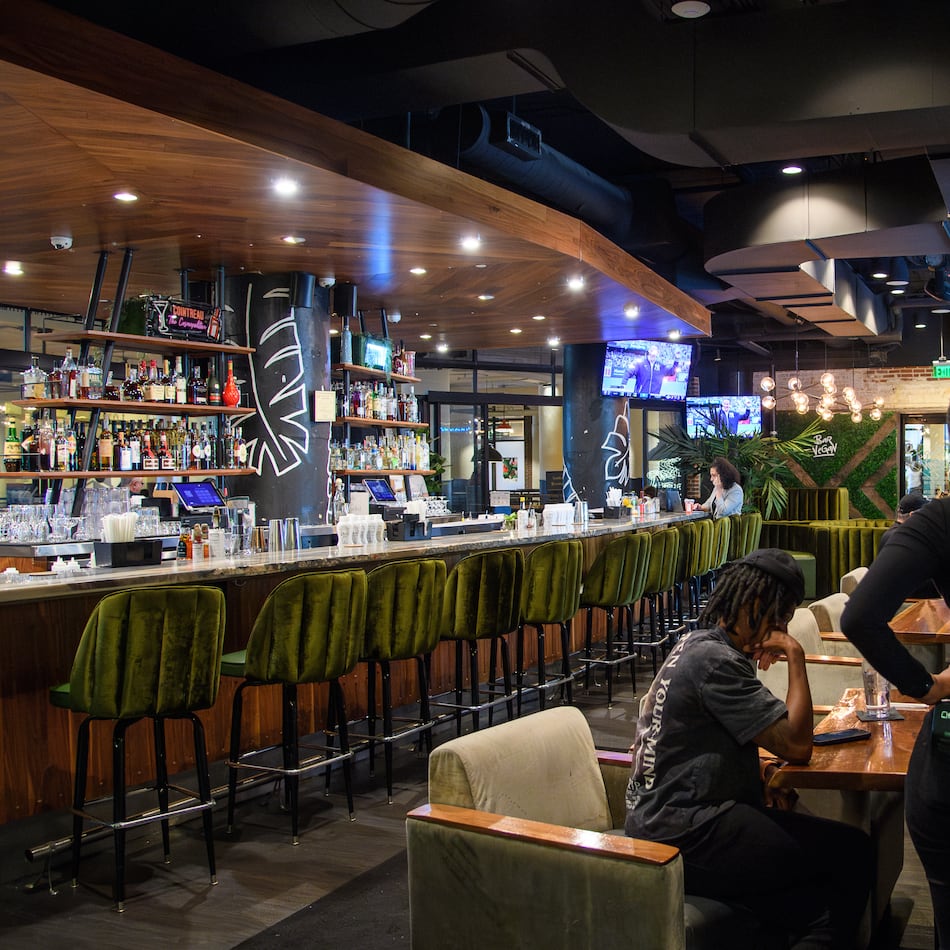Turnout among black voters soared in last month’s Georgia primary, a show of strength that could bode well for Democrats in this year’s contests for governor and other statewide offices.
The number of black voters rose 43 percent in the May 22 election when compared with 2010, the last time there was a competitive race for governor, according to an Atlanta Journal-Constitution analysis of demographic data released this week by the Georgia Secretary of State's Office.
The data show the broad majority of African-American voters pulled Democratic ballots, which could bolster the hope of Stacey Abrams, who is racing to be the nation’s first black female governor. Her Republican opponent will be decided in a July 24 runoff between Lt. Gov. Casey Cagle and Secretary of State Brian Kemp.
At the same time, the proportion of white voters continues to decline. White voter participation in last month’s primary was down 9 percent from 2010. And white voters are more likely to be conservative, making up 93 percent of the GOP primary vote — and just 30 percent of the Democratic support.
“It confirms what we’ve been seeing among the Democratic base around the country: There is energy that’s going to be felt in the fall from voters who are clearly excited,” said Beth Schapiro, a Democratic strategist. “And they’ve got to keep generating as much enthusiasm as they can.”
The data give the clearest view yet of the changing Georgia primary electorate that shaped a gulf between the two parties that's as wide as it's been in decades. While the Republicans tried to outflank each other on conservative issues, Democrats jockeyed over who was more progressive.
Abrams built her electoral strategy around energizing left-leaning voters, including minorities, with liberal stances on gun control, criminal justice initiatives and tax policy. Her approach was vindicated with a whopping victory over her opponent, who aimed for a more centrist appeal.
The message resonated with voters. Four years ago, Republicans outvoted Democrats in the primary by about 265,000 ballots. This year the GOP edge was about 56,000 votes. Overall, Democratic primary voters have shot up by 40 percent since 2010. Republicans declined by 10 percent.
“Abrams did succeed in mobilizing black turnout,” University of Georgia political scientist Charles Bullock said. “If she were to replicate the kind of feat she had in the primary, that would provide her with the kind of votes she’ll need” in the general election.
Georgia Republicans are increasingly relying on appeals to a white, conservative base in party contests. This year's GOP race featured five candidates who pledged to expand gun rights, tighten abortion restrictions and crack down on illegal immigration.
They are competing for a base of voters that has remained racially homogeneous. While the total number of nonwhite voters has risen 46 percent since 2010, only one-tenth of those new nonwhite voters pulled Republican ballots in last month’s primary.
“The greatest problem facing our party right now is complacency,” GOP strategist Chip Lake said.
“We’ve gotten used to winning statewide elections in Georgia,” he added. “When you combine the change in demographics with the current energy of the Democratic base, we can’t afford to take anything for granted in November or we might find ourselves on the outside looking in.”
The Democratic arc mirrors a broader trend that has shaped Georgia politics. White voters have steadily fled the Democratic Party — and African-Americans have played an increasingly important role. Blacks made up roughly 48 percent of the Democratic primary vote in 2008. That number rocketed to 60 percent this year.
Abrams leveraged that trend in a dominating victory over former state Rep. Stacey Evans. She won with about 76 percent of the vote and carried all but six of Georgia’s 159 counties, helped by soaring Democratic turnout in vast stretches of the state.
In rural Washington County, a majority-black area in Middle Georgia that Abrams visited on the campaign trail, Democratic turnout has nearly doubled since the 2014 vote.
And no county experienced a greater jump in Democratic voter participation between 2010 and 2018 than Gwinnett, a fast-diversifying suburb that’s central to the party’s hopes of winning the Governor’s Mansion.
Richard McDaniel, a Georgia strategist and adviser in Doug Jones’ upset victory in Alabama for the U.S. Senate, said the key may be treating African-American voters as the party once lavished attention on swing suburban voters. That will require an inclusive strategy, as well as more funding to pay for staffers and infrastructure.
“When you have a solid message and strategy to engage the African-American community, you will increase turnout and also your chances of winning,” McDaniel said. “Abrams is an organizer at heart — and she understands this.”
By the numbers
43 percent: Increase in black primary voters since 2010
9 percent: Decrease in white primary voters since 2010
347,373: Black primary voters
741,121: White primary voters
6.1 million: Total registered active voters
Source: Atlanta Journal-Constitution analysis of data from Georgia Secretary of State’s Office
Keep Reading
The Latest
Featured







